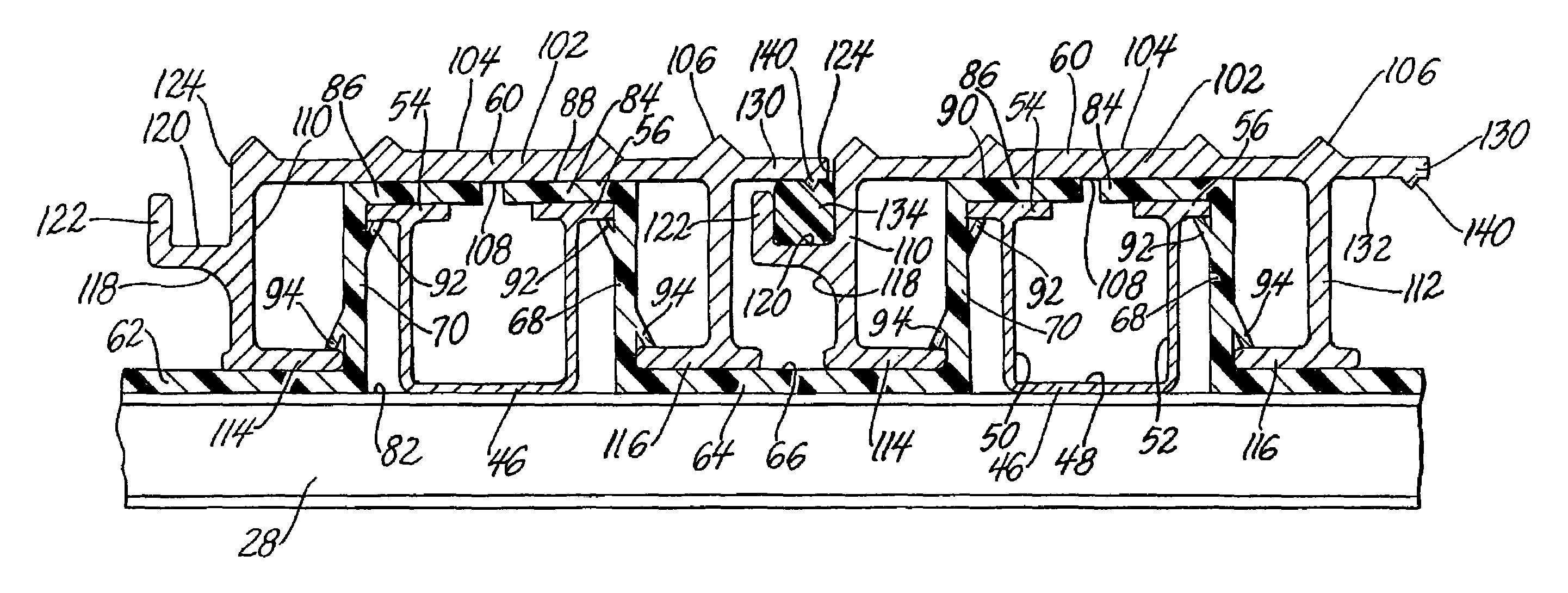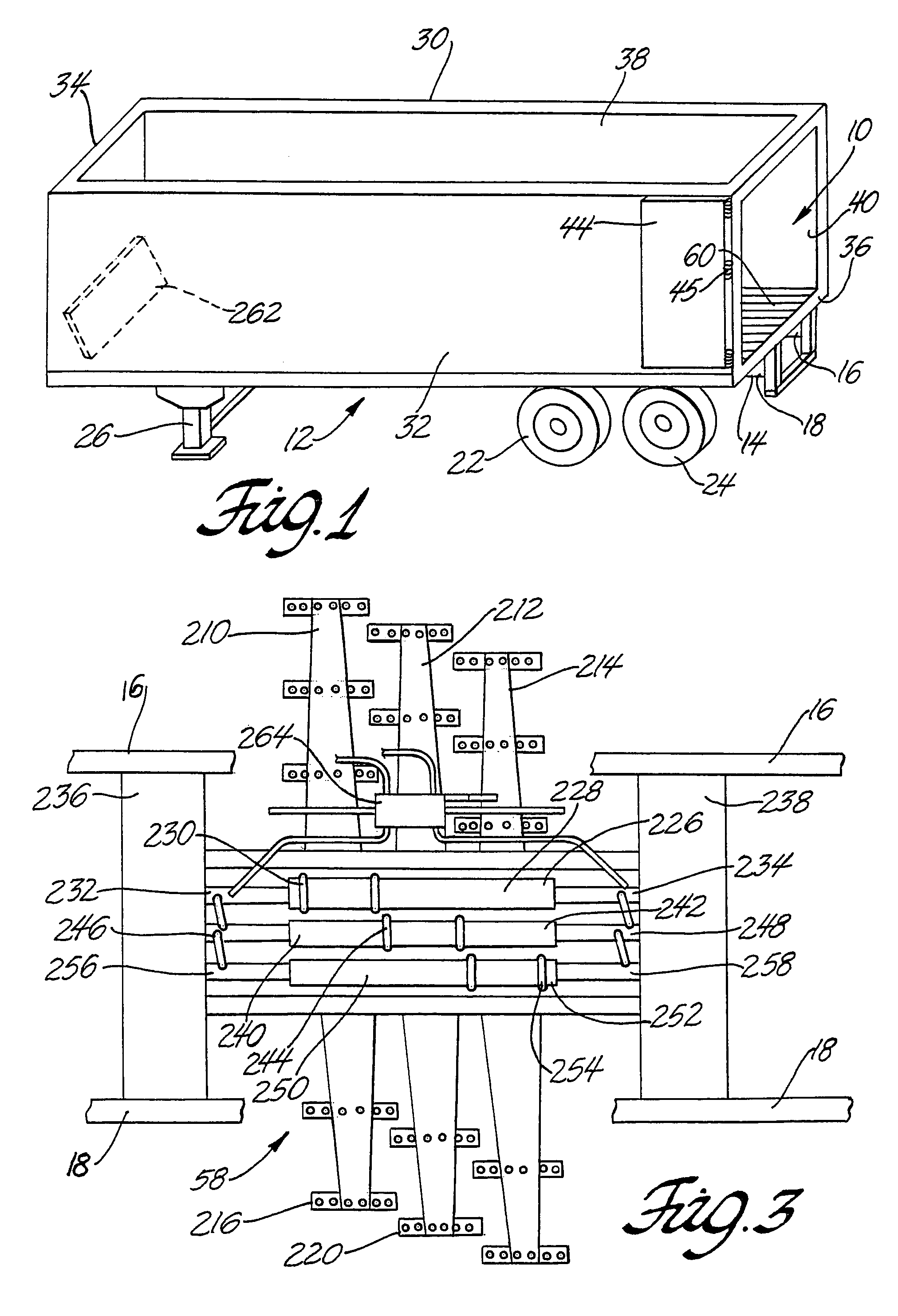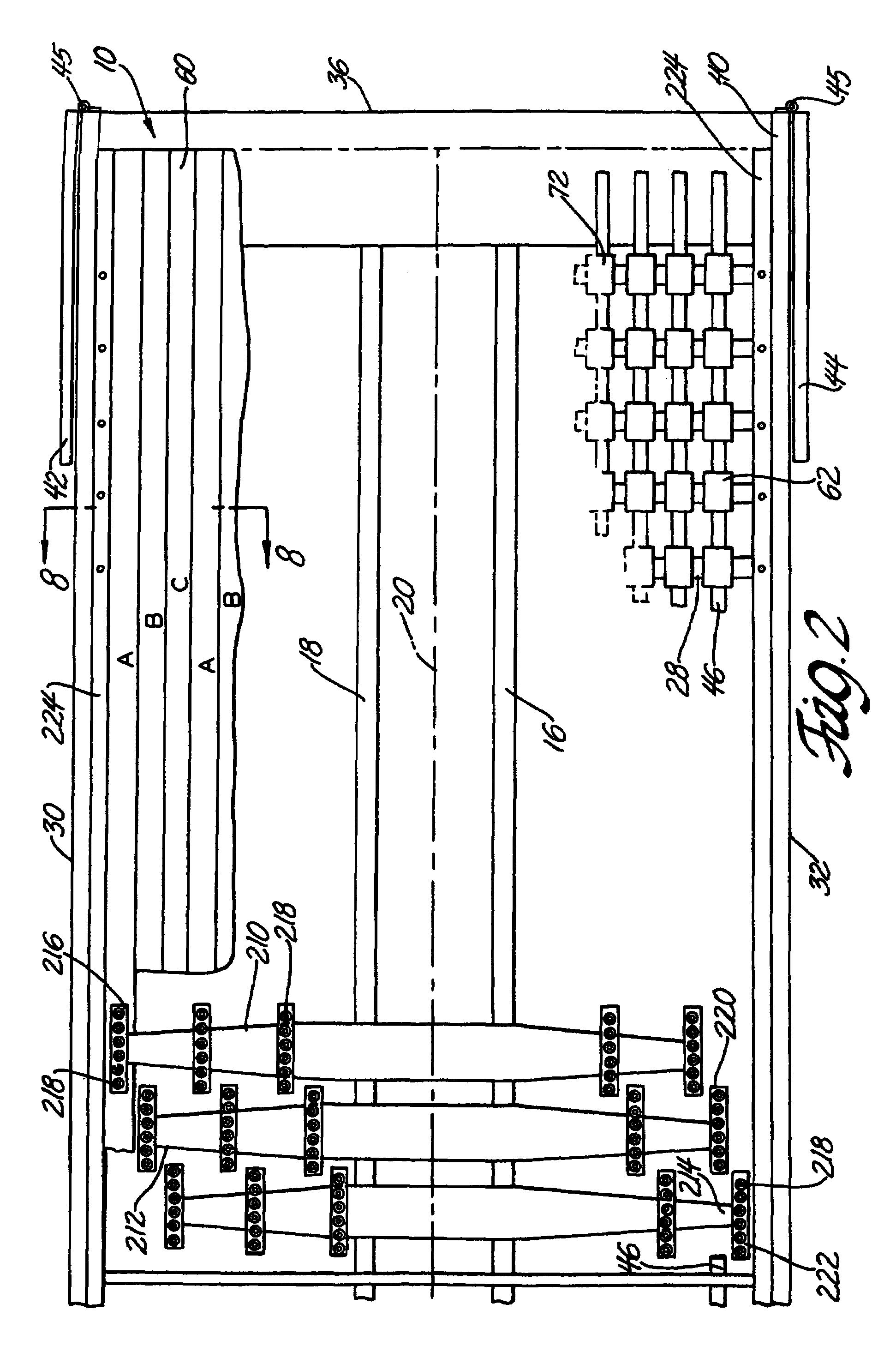Reciprocating floor conveyor
a floor conveyor and conveyor technology, applied in the direction of conveyors, transportation and packaging, etc., can solve the problems of cargo contamination, cargo loss, and serious problem of cargo loss
- Summary
- Abstract
- Description
- Claims
- Application Information
AI Technical Summary
Benefits of technology
Problems solved by technology
Method used
Image
Examples
Embodiment Construction
[0027]The reciprocating floor conveyor 10 is shown in the drawing as part of a semi trailer 12. The reciprocating floor conveyor 10 could also be part of a van body mounted on a truck chassis. The floor conveyor 10 may also be part of a stationary conveying system. The semi trailer 12 as shown in FIG. 1 has a main frame 14 which includes a pair of spaced apart channel members 16 and 18 that are parallel to a center axis 20 running the length of the semi trailer. The rear portion of the semi trailer 12 is supported by wheels and tires 22 and 24 that are rotatably journaled on conventional axles. The axles are attached to the main frame 14 by a suspension system. A portion of the semi trailer 12 is supported by a vertically adjustable landing gear 26. A hitch pin (not shown) for attaching the semi trailer 12 to a fifth wheel on a tractor is attached to the bottom by the main frame 14 on the center line 20 of the semi trailer 12 forward of the landing gear 26. Channel members 16 and 18...
PUM
 Login to View More
Login to View More Abstract
Description
Claims
Application Information
 Login to View More
Login to View More - R&D
- Intellectual Property
- Life Sciences
- Materials
- Tech Scout
- Unparalleled Data Quality
- Higher Quality Content
- 60% Fewer Hallucinations
Browse by: Latest US Patents, China's latest patents, Technical Efficacy Thesaurus, Application Domain, Technology Topic, Popular Technical Reports.
© 2025 PatSnap. All rights reserved.Legal|Privacy policy|Modern Slavery Act Transparency Statement|Sitemap|About US| Contact US: help@patsnap.com



